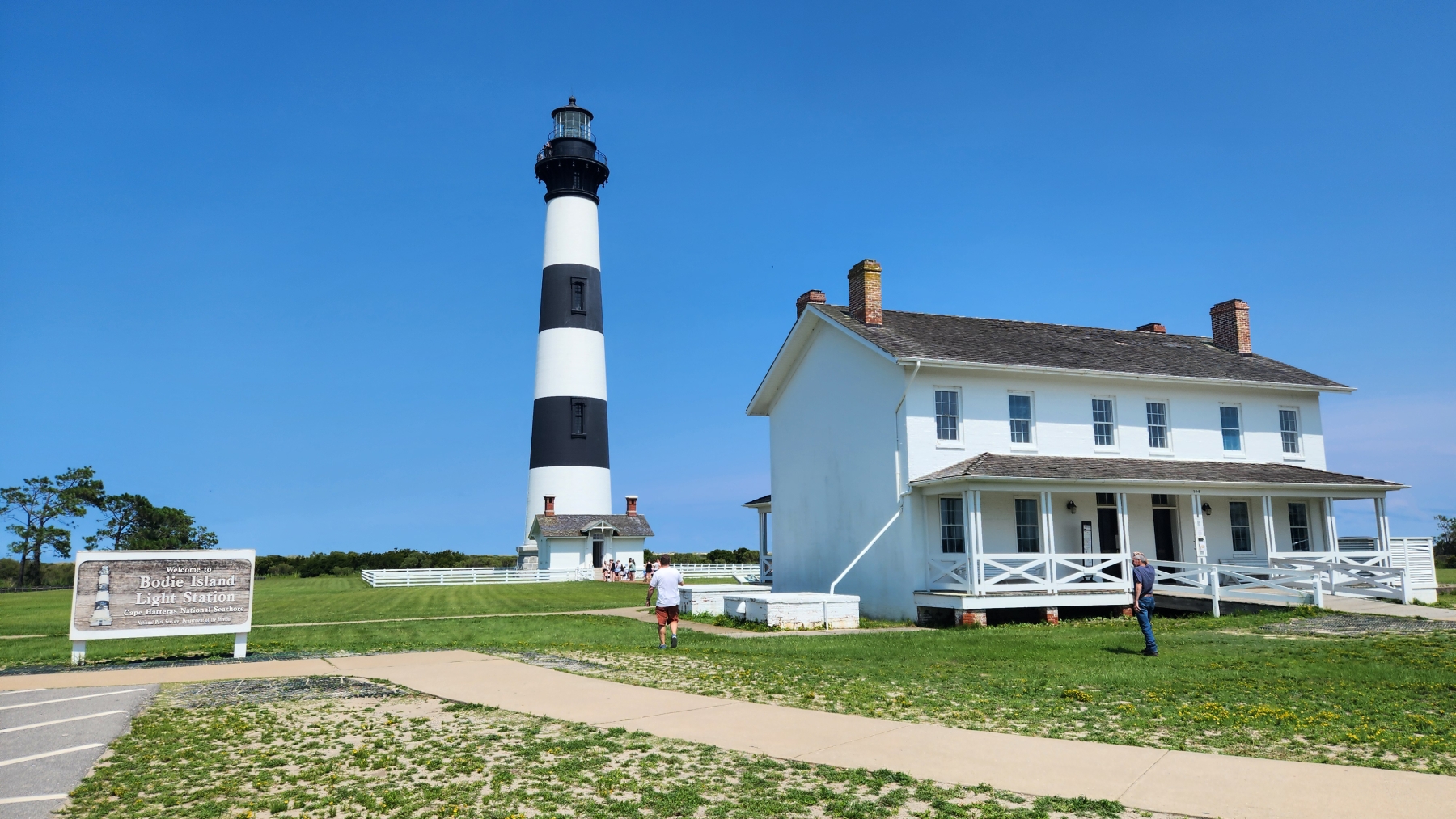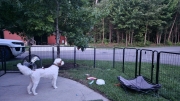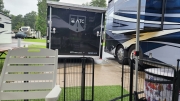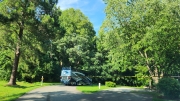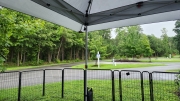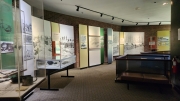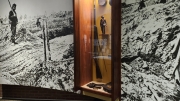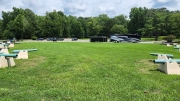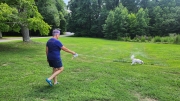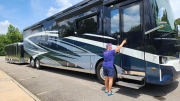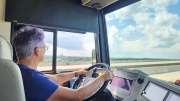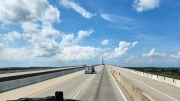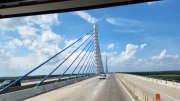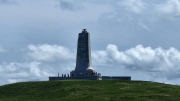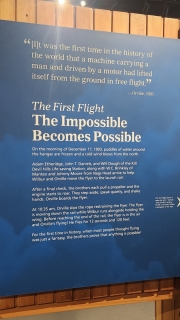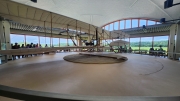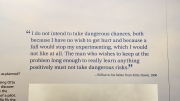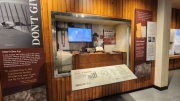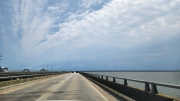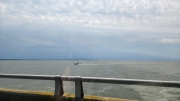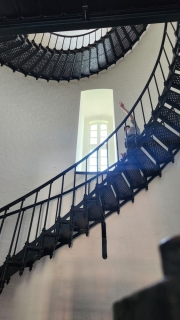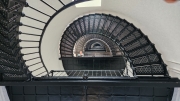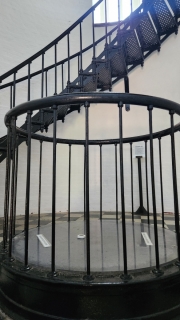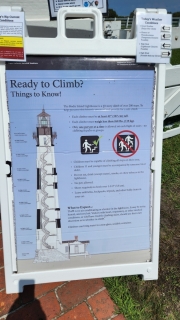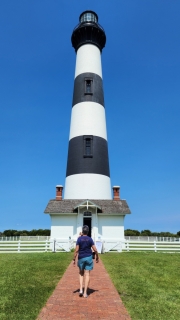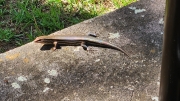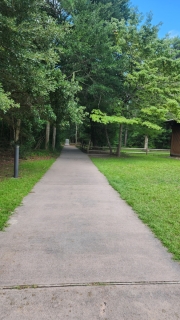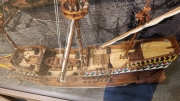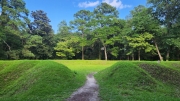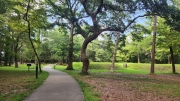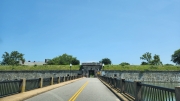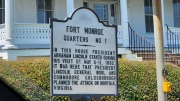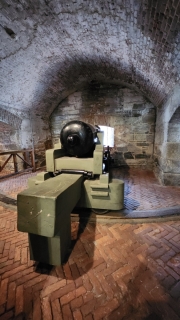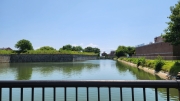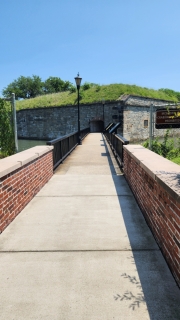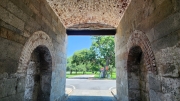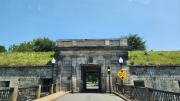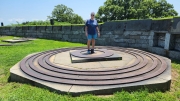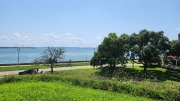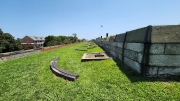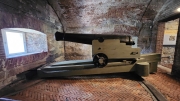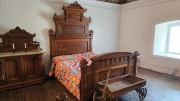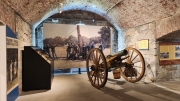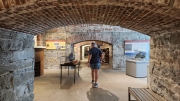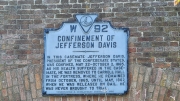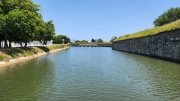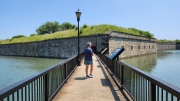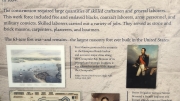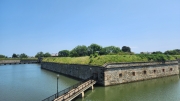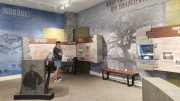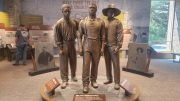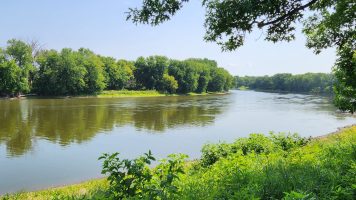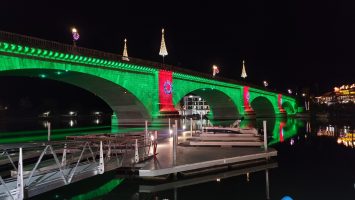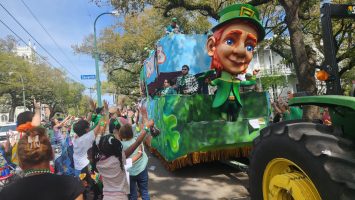July 21-28, 2024
We had an amazing time in North Carolina, but we were looking forward to our visit in Virginia. Less than a week before our trip we did some research and switched our stay from Suffolk near the coast to a more inland stay in Williamsburg. Over the course of our stay, we explored both areas, and we decided we made a great choice. Williamsburg ended up central to the places we were going, and it was a lovely part of the state.
Our campground was amazing, too, with lots of space. At first, we parked the trailer in their overflow parking lot. The next day, Margot got permission to park it at our space, so she moved it to our site. It made cozy and perfect place for our stay.
On the way to Williamsburg, we decided to stop in Petersburg to check out the Petersburg National Battlefield. It wasn't far from where we were going to be staying, but there was going to be a lot to see while we were there. We took up more than a few parking spaces, but the parking lot was nearly empty.
This national park was a great place to learn more about the Civil War and how it played out in Virginia. There was a long series of battles fought there and a bit farther north in Richmond. Especially interesting was to learn about and see where the Battle of the Crater took place. The Union army blew up a mine and underground tunnels used by the Confederate army, but it didn't give them an advantage. In the confusion, Union soldiers went to the bottom of the resulting crater where they were sitting ducks. It wasn't good.
Our drive to the peninsula where Williamsburg is was very scenic, green, and lovely. We had three weeks to explore the area, and that was enough time to get some errands done. We finally had the chip in our motorhome's windshield repaired, the Jeep had some recalls taken care of, and Lacey had her teeth cleaned. We also took random jewelry to a jeweler down the road to have some repairs and cleaning done.
Our first, full weekend in Williamsburg was a busy one. We took our longest trip to go to the Outer Banks, the popular location along the coast of North Carolina where we found three national parks. First, we went to the huge and busy visitor center at the Wright Brothers National Memorial. We learned a bit about the brothers and how they were the first ones to fly, but we were still a bit disappointed in the lack of learning. There was a small room with panels of information and a few items of memorabilia, but no movie to watch. However, there was an entire replica of their first plane in a big room lit with huge windows open to the blue skies. You could see the runway where they flew, and there were people flying kites. We enjoyed it, but honestly didn't stay very long. It was very crowded.
We continued along the narrow Channel Islands to the Bodie Island Visitor Center to learn about the Cape Hatteras National Seashore. There was a bit to learn, but it was mostly just a beautiful area. It was hot and a bit muggy, so we decided to save $20 and skip the climb up the stairs of the lighthouse. We were able to look up from the bottom, and there were lots of photos to take. It was lovely.
Fort Raleigh National Historic Site was our final stop along the Outer Banks, and it was an odd one. We'd been to lots of forts since getting to the Gulf and Atlantic Coasts, but this wasn't like the others. First, there is nothing of the fort left, and the national site didn't go over the history of it very much. Instead, they focused on something much more interesting, the history of the "Lost Colony" on Roanoke Island.
The people in the Roanoke Colony struggled, but they were making it work. First, Sir Walter Raleigh visited a thriving colony. On his next visit, the colonists were gone. There are lots of theories about what happened and where the colonists went, and the visitor center went over all of the possibilities. But no one knows what happened, and maybe we never will.
It was a long day to visit the Outer Banks that we wrapped up with dinner. We came home exhausted and got up again in the morning to head to Fort Monroe. This fort was close to home and completely different than the Fort Raleigh experience. This fort was huge and still strong.
There are apartments and buildings inside, with roads to drive around the fort on. There was a lot to explore, including a large museum. In a separate site, there was a life-sized replica of the ships used during the fort's heyday that we walked through, and a life-sized version of the tent used by General George Washington. We also were able to stand in the cell where the Confederate President Jefferson Davis was held after the Civil War. The flag he had in his cell was even there. It was a sobering and patriotic experience.
The most interesting things we learned were associated with Fort Monroe's nickname, Freedom's Fortress. The first slaves to arrive on ships arrived at the island that contained the fort. Later during the Civil War, slaves risk their lives and escaped to Fort Monroe to obtain their freedom, some of the first to do so. It was an amazing thing to learn about, the symbolic start and end of slavery in this country.
Even the drive on roads around the fort was awesome. We really enjoyed the entire weekend, but especially Fort Monroe.
Our stay in Williamsburg was too big to fit into one post. Check out Part 2 for some exciting news!
